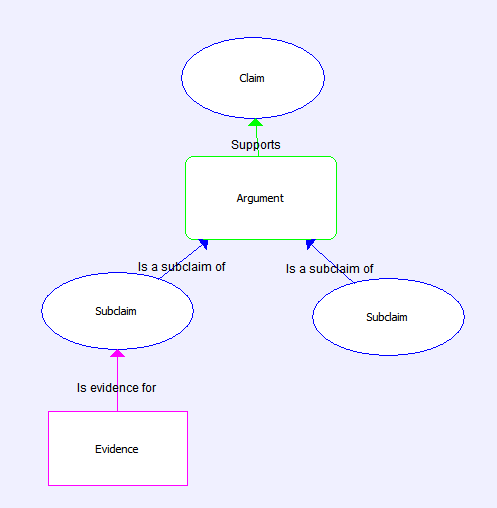It allows you to structure your overall argument into the following elements:
| Structure | Description |
|---|---|
Claim- a statement asserted within the argument that can be assessed to be true or false, e.g.
|
Each claim is supported by a number of sub claims, arguments or evidence.
The claim may contain additional contextual material, for example explaining terms used and scope. ASCE contains tools for editing rich narrative at any node in the safety case. |
Argument- a description of the argument approach presented in support of a claim. e.g.:
|
This element is optional, but often it is good practice to include to explain the approach to satisfying the parent claim.
If the approach to supporting a claim is straightforward or well understood by the intended audience, it is permissible to simply link directly from the supporting claim. |
Evidence- a reference to the evidence being presented in support of the claim or argument, e.g.
|
Usually the evidence node will summarise and link out to the relevant report containing the evidence.
ASCE contains a number of tools to support:
|
